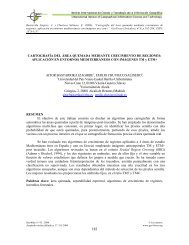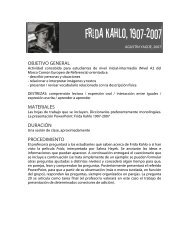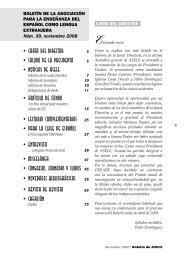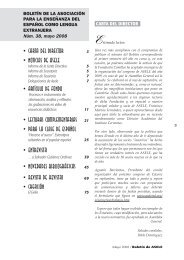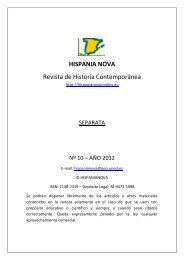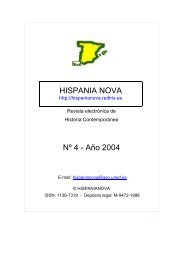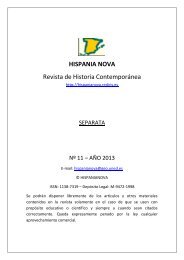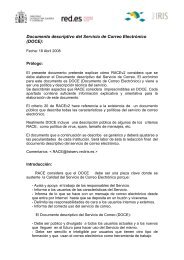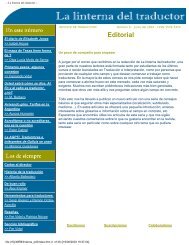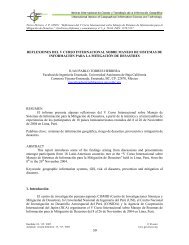Preparing an IPv6 Addressing Plan Manual - RedIRIS
Preparing an IPv6 Addressing Plan Manual - RedIRIS
Preparing an IPv6 Addressing Plan Manual - RedIRIS
- No tags were found...
You also want an ePaper? Increase the reach of your titles
YUMPU automatically turns print PDFs into web optimized ePapers that Google loves.
Students (1) Location 35 9 2001:db8:1234:1239::/64Etc.66.16.1.1MANAGING HOSTS<strong>Addressing</strong> HostsIntroductionOnce we have <strong>an</strong> addressing pl<strong>an</strong> for the <strong>IPv6</strong> networks, we c<strong>an</strong> proceed to addressthe hosts in the network. There are three common methods for doing this:• StateLess Address Auto Configuration (SLAAC)• Dynamic Host Configuration Protocol for <strong>IPv6</strong> (DHCPv6)• Static <strong>IPv6</strong> addressesWe recommend automatic configuration via SLAAC or DHCPv6 for most clientsbecause this makes m<strong>an</strong>agement considerably easier. If properly implemented, italso increases the privacy of the users. A static configuration is recommended onlyfor equipment such as routers, switches, firewalls <strong>an</strong>d servers.6.1.2StateLess Address Auto Configuration (SLAAC)SLAAC is the simplest way to link hosts to <strong>an</strong> <strong>IPv6</strong> network. The router sends “RouterAdvertisements” (RAs) <strong>an</strong>d the hosts use the information in the RA in combinationwith their MAC address to assign <strong>an</strong> <strong>IPv6</strong> address.If multiple routers in a single network send RAs, the hosts will listen to both RAs<strong>an</strong>d configure addresses on both networks. This feature c<strong>an</strong> be used to incorporate adegree of redund<strong>an</strong>cy.6.1.3Privacy extensionsSome operating systems have privacy extensions in addition to SLAAC. Dependingon the operating system, these will be either active or inactive by default. Privacyextensions ensure that third parties c<strong>an</strong>not see what kind of network card a hosthas. In st<strong>an</strong>dard SLAAC this is visible because the MAC address is used for loggingon to a network. Because the same MAC address is used for logging on to variousnetworks (for example, with a smartphone), third parties c<strong>an</strong> see that one <strong>an</strong>d thesame host is being used. Privacy extensions use multiple r<strong>an</strong>dom addresses per hostto prevent the host from being traced.However, the use of privacy extensions in combination with SLAAC is problematicif network m<strong>an</strong>agers wish to trace who is using which <strong>IPv6</strong> address <strong>an</strong>d when. Onesolution is to use centrally coordinated address assignment via DHCPv6 (see section6.1.4). However, this is not supported by all operating systems at present. Onecommon operating system that does not support DHCPv6 is Mac OS X. Also, DHCPv6software is not installed as st<strong>an</strong>dard by all Linux <strong>an</strong>d BSD distributors.21<strong>Preparing</strong> <strong>an</strong> <strong>IPv6</strong> <strong>Addressing</strong> Pl<strong>an</strong>




